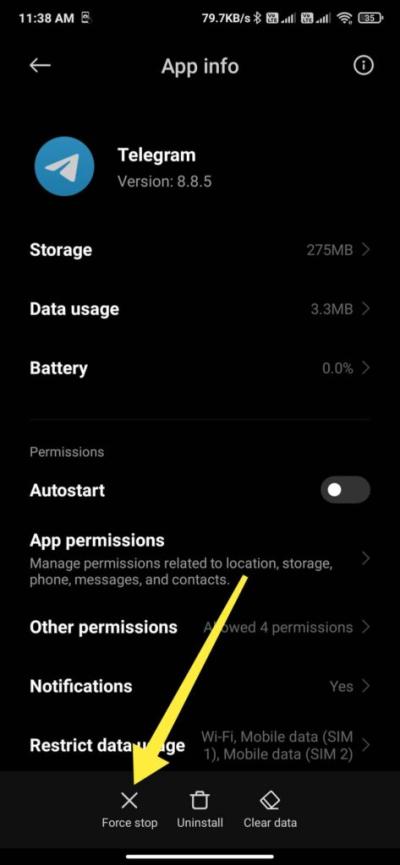Alibaba, as one of the world's largest online marketplaces, offers a range of shipping options to cater to diverse business needs. It's essential to comprehend these shipping processes to make informed decisions for your e-commerce venture.1.
Alibaba Shipping Options: Alibaba provides various shipping options, including express shipping, air freight, and sea freight. The choice depends on factors such as the nature of your products, budget considerations, and delivery timelines.2.
Express Shipping: Ideal for smaller shipments and faster delivery, express shipping services like DHL, UPS, and FedEx offer reliable and quick transportation. While this option is efficient, it may come with a higher cost per unit.3.
Air Freight: Suited for mid-sized shipments, air freight balances speed and cost. Products are transported via cargo planes, reducing delivery time compared to sea freight. It's a popular choice for businesses seeking a balance between cost-effectiveness and swifter delivery.4.
Sea Freight: Economical for large shipments, sea freight is a slower but cost-efficient option. It's advisable for bulk orders with a longer lead time. Container shipping, a common sea freight method, allows businesses to transport sizable quantities of goods economically.5.
Shipping Terms: Understanding shipping terms is crucial.
Alibaba often uses terms like FOB (Free on Board) or EXW (Ex Works). These terms define the responsibilities and costs associated with shipping, helping you determine the most suitable arrangement for your business.6.
Shipping Costs: Alibaba's shipping costs can vary based on factors like the chosen shipping method, destination, and package dimensions. It's essential to obtain detailed quotes and factor in all potential expenses, including customs duties and taxes, to calculate the total cost accurately.To further simplify your understanding, here's a breakdown of
Alibaba's shipping processes in a table:
| Shipping Method | Characteristics |
|---|
| Express Shipping | Fast delivery, suitable for smaller shipments, higher cost |
| Air Freight | Moderate speed, cost-effective for mid-sized shipments |
| Sea Freight | Economical for large shipments, slower delivery |
By comprehending these aspects of
Alibaba's shipping processes, you can make informed decisions that align with your business goals and customer expectations.
Choosing the Right Shipping Partner
When embarking on the journey from
Alibaba to Amazon, selecting the right shipping partner is a pivotal decision that can significantly impact the success of your e-commerce venture. Here's a comprehensive guide to help you make an informed choice:1.
Research and Reputation: Begin by researching potential shipping partners and assessing their reputation. Look for reviews and testimonials from other businesses that have used their services. A reliable partner with a positive track record is more likely to provide consistent and quality services.2.
Global Reach: Ensure that the shipping partner has a global reach, especially if your business involves international shipping. A well-established network can streamline the logistics process and offer a more extensive coverage area.3.
Customs Expertise: International shipping involves navigating customs procedures, and a reputable shipping partner should have expertise in handling customs documentation and compliance. This expertise can prevent delays and ensure a smoother transit process.4.
Shipping Methods: Evaluate the shipping methods offered by potential partners. Consider the variety of options such as express shipping, air freight, and sea freight. The availability of diverse shipping methods allows you to choose the one that best aligns with your specific business requirements.5.
Cost Considerations: While cost is a crucial factor, it's essential to strike a balance between affordability and service quality. Request detailed quotes from potential shipping partners, considering not only the shipping fees but also any additional charges, such as customs duties and taxes.6.
Communication and Tracking: Effective communication and real-time tracking capabilities are vital for a smooth shipping experience. Choose a shipping partner that provides transparent communication channels and allows you and your customers to track shipments throughout the entire journey.To facilitate your decision-making process, create a checklist for evaluating potential shipping partners:
- Reputation and reviews
- Global reach and coverage
- Customs expertise
- Diverse shipping methods
- Transparent and competitive pricing
- Communication and tracking capabilities
Remember, the right shipping partner is a valuable ally in ensuring the seamless transportation of your products from
Alibaba to Amazon, contributing to customer satisfaction and the overall success of your e-commerce business.
Navigating Customs and Import Regulations
Understanding and navigating customs and import regulations is a critical aspect of the shipping process when moving products from
Alibaba to Amazon. Failure to comply with these regulations can lead to delays, additional costs, and potential legal issues. Here's a detailed guide to help you navigate this intricate landscape:1.
Research Destination Country Regulations: Each country has its own set of customs and import regulations. Thoroughly research the regulations of the destination country to ensure compliance. This includes understanding documentation requirements, prohibited items, and any specific regulations related to your product category.2.
Documentation Accuracy: Prepare and ensure the accuracy of all required shipping documentation. This may include invoices, packing lists, certificates of origin, and any other documents mandated by the destination country. Inaccurate or incomplete documentation can result in customs clearance delays.3.
Customs Duties and Taxes: Be aware of the customs duties and taxes applicable to your products in the destination country. Consider these costs when calculating the overall expenses of shipping. Clearly communicate these potential charges to your customers to avoid surprises upon delivery.4.
Work with Customs Brokers: Engage the services of experienced customs brokers who are well-versed in the import regulations of the destination country. Customs brokers can assist with proper documentation, provide guidance on compliance, and facilitate a smoother customs clearance process.5.
Compliance with Import Bans and Restrictions: Some countries may have specific bans or restrictions on certain products. Ensure that your products comply with these restrictions to prevent confiscation or legal issues. This information is often available on the official website of the destination country's customs authority.To further assist you in navigating customs and import regulations, here's a simplified table highlighting key considerations:
| Consideration | Details |
|---|
| Research Destination Country Regulations | Understand specific customs and import regulations for the destination country. |
| Documentation Accuracy | Ensure precise and complete documentation to avoid clearance delays. |
| Customs Duties and Taxes | Be aware of applicable duties and taxes; communicate them to customers. |
| Work with Customs Brokers | Engage experienced customs brokers for guidance and support. |
| Compliance with Restrictions | Ensure products adhere to any import bans or restrictions in the destination country. |
By carefully navigating customs and import regulations, you can minimize risks, expedite the clearance process, and ensure a smoother transition of your products from
Alibaba to Amazon.
Optimizing Shipping Costs
Optimizing shipping costs is a crucial aspect of managing an e-commerce business efficiently. Striking the right balance between cost-effectiveness and service quality can significantly impact your bottom line. Here's a comprehensive guide on how to optimize shipping costs when moving products from
Alibaba to Amazon:1.
Evaluate Shipping Methods: Assess the different shipping methods available, such as express shipping, air freight, and sea freight. Compare the costs and delivery times associated with each method. Depending on your product type and urgency, choose the most cost-effective option without compromising on customer satisfaction.2.
Bulk Shipping for Cost Efficiency: Consider consolidating shipments into larger quantities. Bulk shipping often results in lower shipping costs per unit, especially with sea freight. This approach is beneficial for businesses with a steady flow of inventory and longer lead times.3.
Utilize Freight Aggregators: Explore the services of freight aggregators or shipping consolidators. These platforms combine shipments from multiple businesses, allowing you to benefit from lower collective shipping rates. This is particularly advantageous for small to medium-sized enterprises looking to minimize costs.4.
Negotiate with Shipping Partners: Establish a strong relationship with your shipping partners and negotiate pricing based on your shipping volume. Many carriers are open to negotiation, especially if you can offer consistent business. Negotiating better rates can lead to significant long-term cost savings.5.
Implement Dimensional Weight Pricing: Be mindful of dimensional weight pricing, which considers the size of the package in addition to its weight. Pack products efficiently to avoid unnecessary dimensional weight charges. Optimize packaging materials to strike the right balance between protection and size.6.
Transparent Shipping Costs for Customers: Clearly communicate shipping costs to your customers at the checkout stage. Implementing transparent pricing builds trust and helps manage customer expectations. Consider offering shipping calculators to provide accurate cost estimates based on the chosen shipping method and destination.To provide a quick reference, here's a summarized list of strategies for optimizing shipping costs:
- Evaluate shipping methods
- Utilize bulk shipping for cost efficiency
- Explore freight aggregators
- Negotiate with shipping partners
- Implement dimensional weight pricing
- Communicate transparent shipping costs to customers
By implementing these strategies, you can enhance your overall shipping cost management, ensuring cost-effective and efficient transportation of products from
Alibaba to Amazon.
Ensuring Timely Deliveries
Ensuring timely deliveries is crucial for maintaining customer satisfaction and the success of your e-commerce business. Here's a comprehensive guide on how to navigate the complexities of shipping and logistics to guarantee prompt deliveries from Alibaba to Amazon:1.
Choose Reliable Shipping Partners: Partnering with reliable shipping carriers is the foundation of timely deliveries. Research carriers with a proven track record for on-time deliveries and positive customer feedback. Ensure they have a robust network that covers your shipping destinations efficiently.2.
Optimize Shipping Routes: Optimize shipping routes to reduce transit times. Utilize shipping carriers that offer direct routes or efficient connections to the destination. Minimizing the number of handling points can significantly contribute to faster deliveries.3.
Implement Inventory Management: Efficient inventory management plays a pivotal role in meeting delivery timelines. Keep track of stock levels, replenish inventory in a timely manner, and implement automated systems to prevent stockouts. This ensures that products are ready for shipment when orders are placed.4.
Utilize Expedited Shipping Services: For time-sensitive shipments, consider utilizing expedited shipping services. While this option may incur higher costs, it ensures quicker transit times, meeting the expectations of customers who prioritize speedy deliveries.5.
Monitor Customs Clearance: Stay vigilant during the customs clearance process. Delays at customs can impact delivery schedules. Work closely with customs brokers, ensure accurate documentation, and stay informed about any potential customs issues that may arise in the destination country.6.
Provide Real-time Tracking: Enhance customer experience by providing real-time tracking information. Enable customers to track their orders from the moment they are shipped until they reach the final destination. Transparency builds trust and reduces customer inquiries about order status.To facilitate your understanding, here's a summarized list of strategies for ensuring timely deliveries:
- Choose reliable shipping partners
- Optimize shipping routes
- Implement efficient inventory management
- Utilize expedited shipping services for time-sensitive shipments
- Monitor customs clearance closely
- Provide real-time tracking for customers
By implementing these strategies and maintaining a proactive approach to logistics, you can enhance the efficiency of your shipping processes and ensure that products reach Amazon and your customers in a timely manner.
FAQ
Explore the frequently asked questions to gain further insights into mastering the art of shipping from Alibaba to Amazon. Whether you're a seasoned e-commerce entrepreneur or just starting, these answers provide valuable information to enhance your shipping knowledge:
What shipping methods does Alibaba offer?
Alibaba provides various shipping options, including express shipping, air freight, and sea freight. The choice depends on factors such as the nature of your products, budget considerations, and delivery timelines.How can I choose the right shipping partner?
Choosing the right shipping partner involves researching and evaluating their reputation, global reach, customs expertise, shipping methods, and communication and tracking capabilities. Establishing a strong partnership is essential for seamless shipping from Alibaba to Amazon.What are the key considerations when navigating customs and import regulations?
Key considerations include researching destination country regulations, ensuring documentation accuracy, understanding customs duties and taxes, working with customs brokers, and complying with import bans and restrictions. Navigating these aspects is crucial for a smooth shipping experience.How can I optimize shipping costs?
Optimizing shipping costs involves evaluating shipping methods, utilizing bulk shipping for cost efficiency, exploring freight aggregators, negotiating with shipping partners, implementing dimensional weight pricing, and transparently communicating shipping costs to customers.What strategies can ensure timely deliveries?
Ensuring timely deliveries requires choosing reliable shipping partners, optimizing shipping routes, implementing efficient inventory management, utilizing expedited shipping services for time-sensitive shipments, monitoring customs clearance, and providing real-time tracking for customers.
These FAQs cover essential aspects of shipping from Alibaba to Amazon, providing valuable guidance to enhance your shipping expertise.
Conclusion
Congratulations on mastering the art of shipping from Alibaba to Amazon! Navigating the intricate world of international logistics requires a combination of knowledge, strategic decision-making, and collaboration with reliable partners. Let's recap the key takeaways from this comprehensive guide:
Understanding Alibaba's Shipping Processes:
Explore the diverse shipping options offered by Alibaba, including express shipping, air freight, and sea freight. Gain insights into shipping terms, costs, and the factors influencing the choice of shipping methods.Choosing the Right Shipping Partner:
Select a shipping partner based on research, global reach, customs expertise, shipping methods, and transparent communication. A strong partnership contributes significantly to the success of your shipping endeavors.Navigating Customs and Import Regulations:
Understand the importance of researching destination country regulations, ensuring documentation accuracy, considering customs duties and taxes, working with customs brokers, and complying with import bans and restrictions for seamless customs clearance.Optimizing Shipping Costs:
Implement strategies such as evaluating shipping methods, utilizing bulk shipping, exploring freight aggregators, negotiating with shipping partners, implementing dimensional weight pricing, and transparently communicating shipping costs to enhance cost-effectiveness.Ensuring Timely Deliveries:
Ensure timely deliveries by choosing reliable shipping partners, optimizing shipping routes, implementing efficient inventory management, utilizing expedited shipping services, monitoring customs clearance, and providing real-time tracking for customers.
By incorporating these insights into your shipping strategy, you are well-equipped to overcome challenges and deliver a seamless experience for both your business and your customers. May your shipments from Alibaba to Amazon be swift, cost-effective, and contribute to the growth and success of your e-commerce venture. Happy shipping!

 admin
admin








